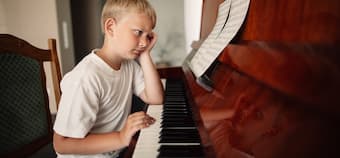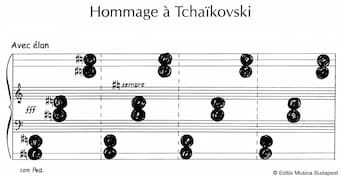“Do outrageous things in practising” – Leon Fleischer
 Practicing is the musician’s training and, like the successful sportsperson, a musician needs to ensure their training is structured, thoughtful and intelligent. The notion that musicians spend hours and hours practicing is largely incorrect – quality of practicing is far better than quantity – but something else which many people overlook is that practicing should also be stimulating and enjoyable.
Practicing is the musician’s training and, like the successful sportsperson, a musician needs to ensure their training is structured, thoughtful and intelligent. The notion that musicians spend hours and hours practicing is largely incorrect – quality of practicing is far better than quantity – but something else which many people overlook is that practicing should also be stimulating and enjoyable.
Note-bashing is not only counter-productive, it’s boring! And boredom is a great enemy to progress; if you’re bored you’re not going to enjoy your practicing and without enjoyment, music-making will feel like a relentless chore.
Added to that, the language we use in music teaching and practicing implies seriousness: exercises, repetition, accuracy, evenness, and assessments. No wonder so many piano students, especially younger students, find piano practice boring compared to the fun of being with friends or playing computer games.
But practicing needn’t be boring, and it needn’t be serious. Replace the word “exercises” with “games” and instantly the activity becomes intriguing and enjoyable. Any piece can be the starting point for “games”, and a game can be simplified or made more complex, depending on the level of the student. There’s a practical purpose in creating exercises out of the pieces one is working on too, rather than engaging in the kind of dry mechanical exercises of the kind Czerny or Hanon wrote: you make the exercises relevant to the music. In addition, valuable time can be wasted learning several pages of somewhat indifferent music or boring exercises for just one aspect of technique – time which could have been much better spent learning some great repertoire.
 In ‘Jatekok’ (which translates as “Games”), Gyorgy Kurtag addresses this problem in a really interesting way, by approaching each aspect of piano playing with a very broad gesture (such as scales or clusters around the piano) which then becomes more refined into a piece with notes which need to be played accurately.
In ‘Jatekok’ (which translates as “Games”), Gyorgy Kurtag addresses this problem in a really interesting way, by approaching each aspect of piano playing with a very broad gesture (such as scales or clusters around the piano) which then becomes more refined into a piece with notes which need to be played accurately.
Gyorgy Kurtag: Jatekok
Changing the vocabulary or using imaginative metaphors can instantly make practicing more fun. One of my teachers used to talk about “tossing the pizza dough” to help me with a tricky, rapid passage in the Prelude from Debussy’s Pour le Piano, which requires fluid, swirling hand and arm movements which flow, interact and overlap each other. (Imagine a chef tossing pizza dough between his hands and you will know the sort of movements I mean.) This kind of vibrant imagery was instantly understandable and enabled me to work on the passage without much further support. It was a metaphor I adopted for my own teaching and one which children in particular really enjoyed.
Claude Debussy: Pour le piano – I. Prelude (Jean-Efflam Bavouzet, piano)
Practicing should also be a playground – a place to have fun with the music, to experiment, and, to quote Leon Fleischer “do outrageous things”. Try playing passages very quickly, or slowly, transposed, backwards or upside-down…. Interesting things often emerge from this kind of playfulness in practicing which may have a more serious application in shaping and interpreting our music for performance or enabling us to play with greater freedom, to take more risks in performance, and to bring vibrancy and excitement to our music-making.
For more of the best in classical music, sign up to our E-Newsletter




